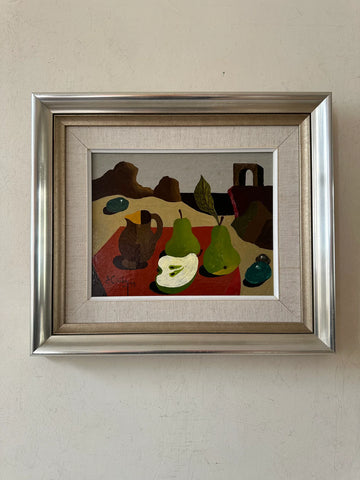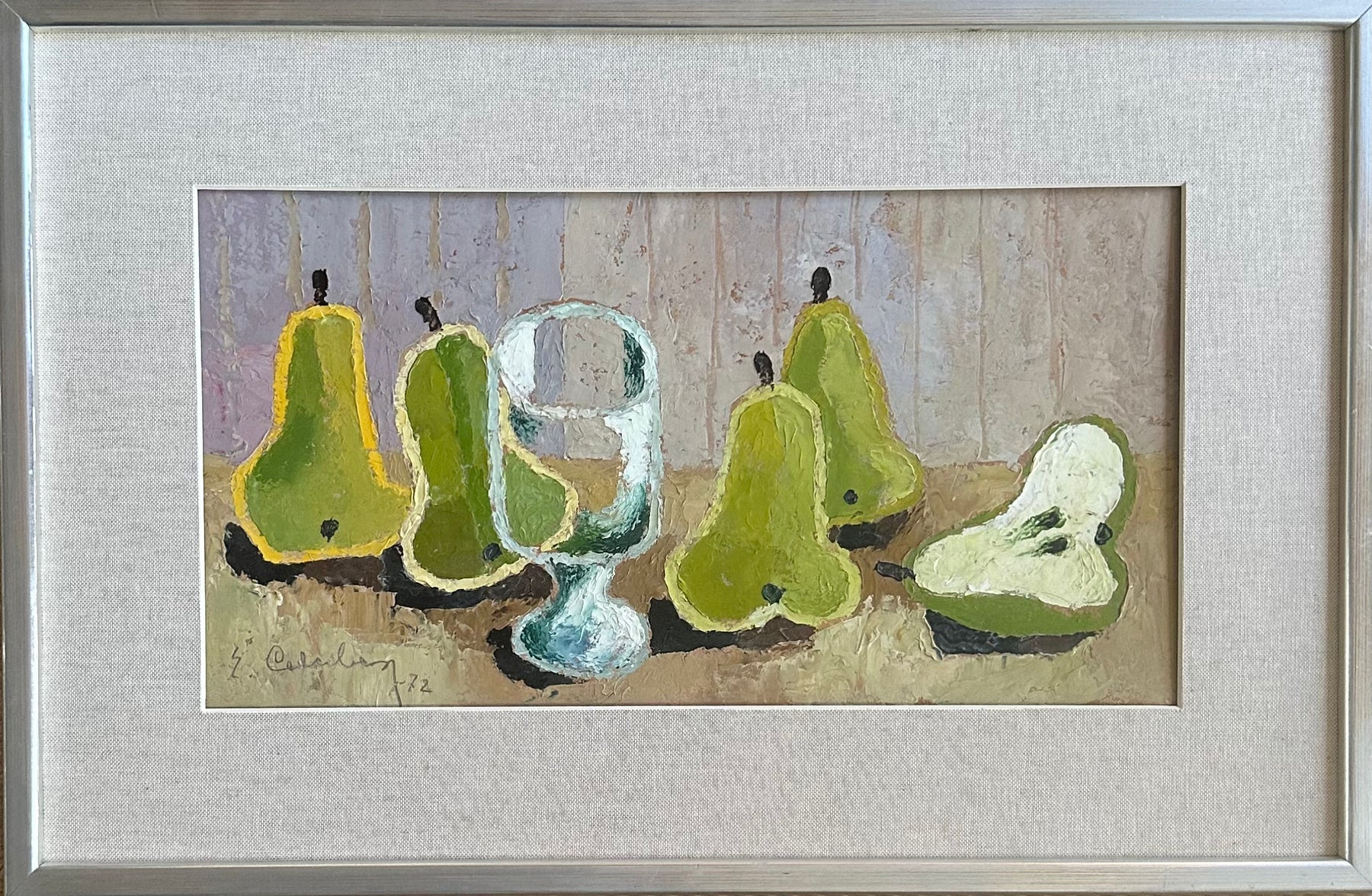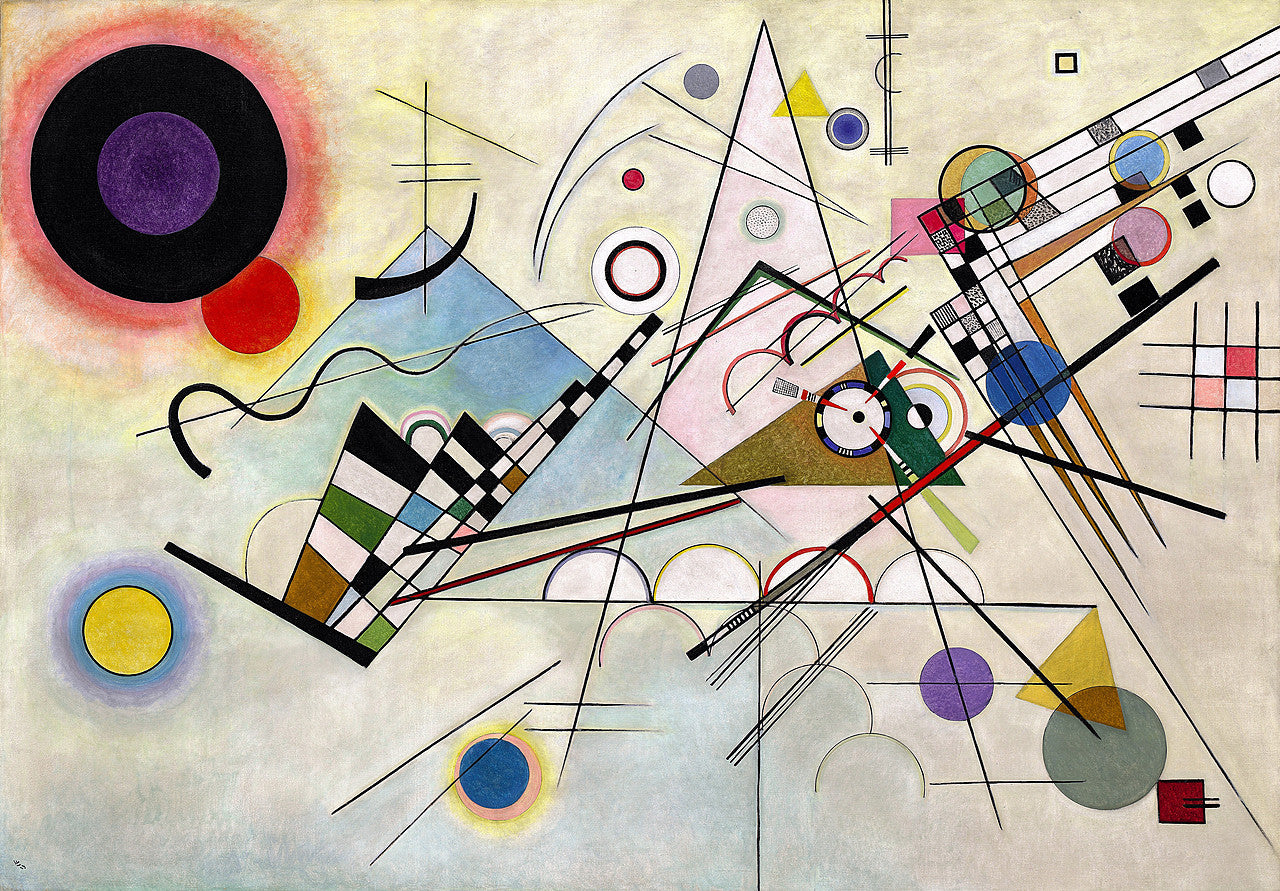100 Years of Surrealism
2024 marks 100 years of the revolutionary modern art movement Surrealism, which produced iconic paintings by artists such as Rene Magritte, Frida Kahlo and Salvador Dali. Emerging just after the end of the First World War, the imagery in these artists' works were certainly no accident, with direct inspiration taken from the symbolism and imagery of their own dreams. Uncanny landscapes and still-life paintings are emblematic of this art movement which displaces subject, colour, and light, to create worlds which remain in-between our subconscious and reality. This article looks at the origins of Surrealism, the artists who pioneered it, and the impact this movement has on the art world today.
'Apples on the Beach' signed Eric Cederberg (1897-1985), oil on board, available at Collins & Green Art. Click the image above for more information.
Early Days of Surrealism
The term Surrealism was first coined by Guillaume Appollinaire in March 1917, but it wasn't until seven years later that the Surrealist Manifesto was written by André Breton in France in October 1924. Many art movements of the early 20th century, such as Surrealism, began with groups of artists writing and subscribing to a published manifesto. This manifesto valued the unconscious mind in creating art, over conscious artistic decisions. This resulted in paintings which did not represent real life, but instead amalgamated objects, situations, and images which only existed simultaneously in a piece of art. Artists and writers involved in the first publication of the Surrealist Manifesto include Louis Aragon, Paul Éluard, and René Crevel.

The first Surrealist Manifesto by André Breton, released in 1914.
This manifesto is now one of the most sought-after manuscripts in history, as few were made in its initial production, which marked the beginning of one of the most important and influential movements in modern art.
The Interpretation of Dreams

The famous 'The Persistence of Memory' by Salvador Dali, 1931. Museum of Modern Art, New York.
Surrealist artists were directly inspired by the advances being made in psychology in the late 19th and early 20th centuries. Sigmund Freud's Interpretation of Dreams revolutionised how we understand dreams and the unconscious, applying psychological meaning to what we see and experience in our dreams. Breton, in his Surrealist Manifesto, was famous for his description of the hypnagogic state- the state in-between wakefulness and sleep. He claimed that in this state 'There is a man cut in two by the window', meaning that dreams allowed impossible situations to exist in our mind's eye.
Surrealist artists took inspiration from this state and tried to recreate what they had seen in this gap between being awake and being in a deep sleep, inspiring famous artworks such as René Magritte's The Son of Man and Salvador Dali's The Persistence of Memory.
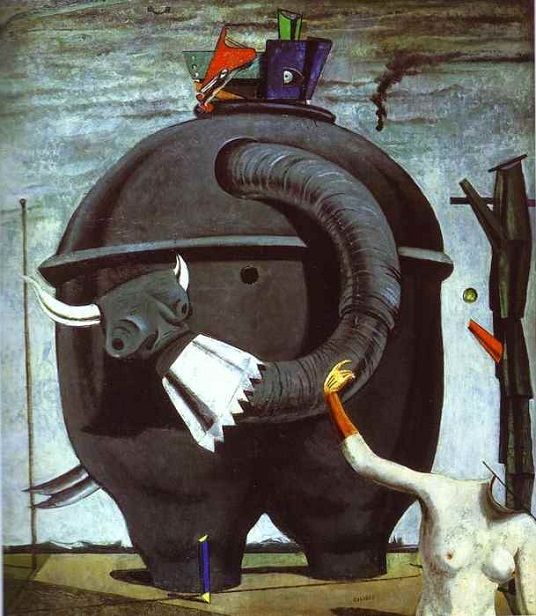
'The Elephant Celebes' by Max Ernst, 1921. Tate Modern, London.
It could even be argued that perhaps Surrealism was a reaction to the horrors of the First and Second World Wars, with the movement originating in France and spreading throughout Europe during these periods. Artists were creating a visual language which dissociated from the photographs and videos of war which occurred in their reality and Surrealism allowed artists to grapple with the turmoil that war brought in an abstract way.

'Soft Construction with Boiled Beans (Premonition of Civil War)' by Salvador Dali, 1936. Philadelphia Museum of Art: The Louise and Walter Arensberg Collection.
Key Artists
Some of the most prominent artists in this movement include Salvador Dali, René Magritte, and Max Ernst. Frida Kahlo, despite her well overdue popularity of recent years, is also considered a Surrealist artist. Her works included subjects such as the Mexican Revolution, womanhood, and her own physical and mental states. As a woman whose disability rendered her bed-bound, Surrealism allowed her mind's imagination to transcend the four corners of her room to create artworks which are steeped in symbolism. Arguably, Kahlo, through her penchant for self-portraiture, used Surrealism in a radically vulnerable way.
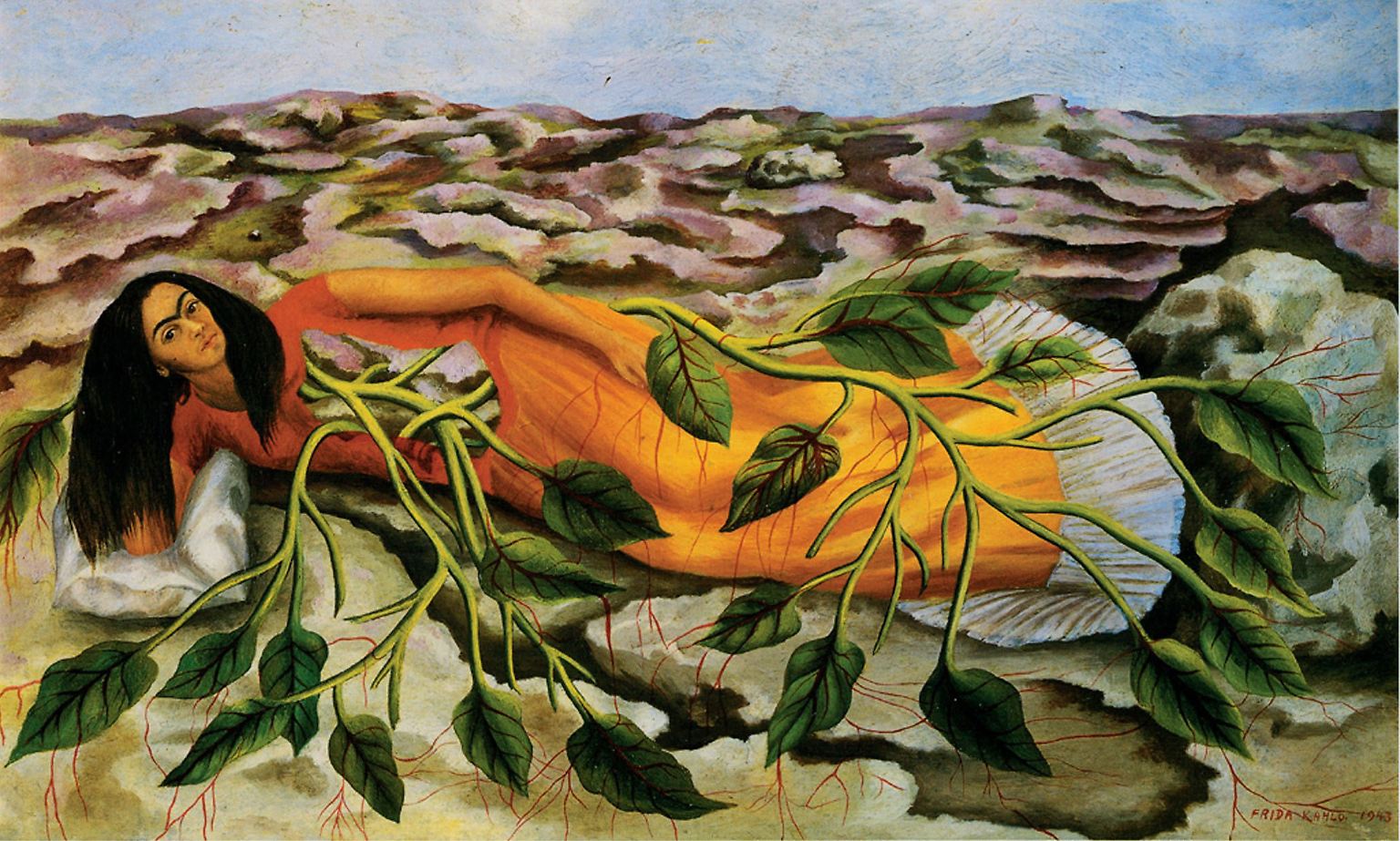
'Roots' by Frida Kahlo, 1943. Private collection.
Surrealism Today
Surrealism has been an extraordinary inspiration for artists throughout the 20th century through to the modern day. Swedish artist Eric Cederberg was much influenced by the Surrealists, using Surrealist composition and lighting to create art which does not represent any certain time of day or place in the world. ( We currently have several Cederberg works available, some influenced by Surrealism and some less so.)
'Pears with Jug' signed Eric Cederberg (1897-1985), oil on panel, available at Collins & Green Art. Click the painting for more information.
There has been upsurge in an interest in Surrealism amongst art collectors and casual art enthusiasts thanks to the current centenary year of the Surrealist Manifesto. It is extraordinary that a movement which occurred a hundred years ago still remains at the front of modern art today.
Final Thoughts
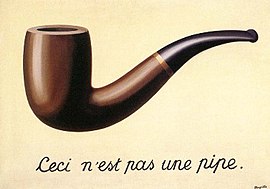
'The Treachery of Images' by René Magritte, 1929. Los Angeles County Museum of Art.
Through its iconic use of situation and imagery, Surrealism remains one of the most influential art movements, not only of the 20th century but in the entire history of art. Where the Romantics saw the beauty of nature in art and poetry as a form of escapism from the everyday, Surrealism grappled directly with issues of identity, time, and mortality which emerge in our subconscious mind. The weird and wonderful was identified as a part of the everyday through our dreams. Through the medium of art, impossible and absurd situations could exist, and the short fragment of time our dreams occupied are captured indefinitely in paint.
Written by Eloise Saggers, Collins & Green Art.


